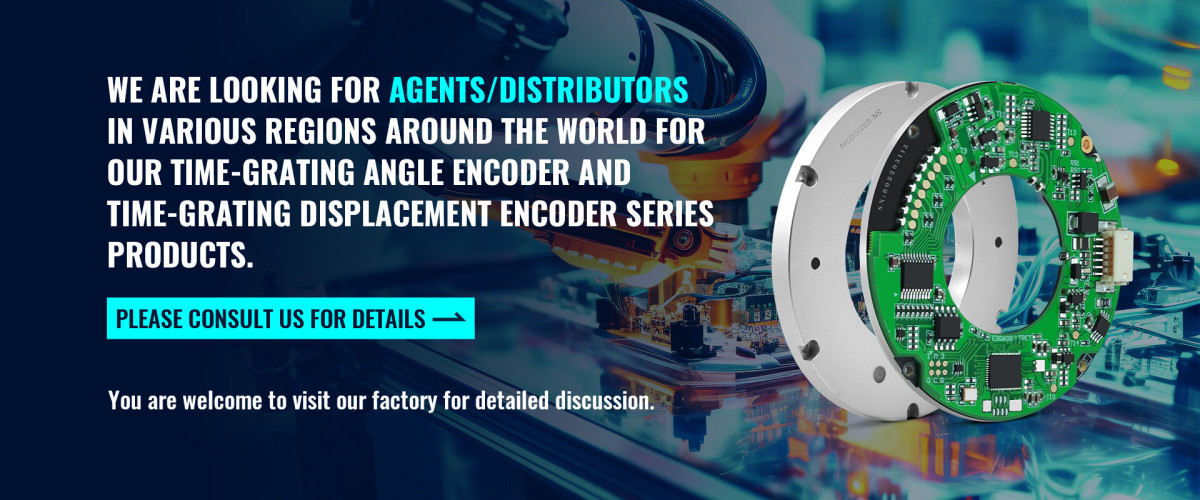Servo encoders are the unsung heroes of motion control systems, delivering precise feedback that ensures the smooth operation of motors in countless applications, from industrial machinery to robotics. But how do they work? In this article, we'll break down the technology behind servo encoders, their components, and the process that enables them to provide critical data in real-time.
What is a Servo Encoder?
A servo encoder is a type of sensor used in servo systems to measure and report motion parameters such as position, velocity, and acceleration. This information allows the system to make real-time adjustments, ensuring optimal performance and accuracy.
At its core, the servo encoder bridges the gap between mechanical motion and electronic control, enabling seamless operation of complex systems.
Core Components of a Servo Encoder
To understand how servo encoders work, it's essential to familiarize yourself with their main components:
Code Disc (or Scale):
- Made of glass, metal, or plastic, this disc has precise markings that encode position information.
- Incremental encoders feature uniform markings, while absolute encoders have unique patterns for every position.
Light Source (or Magnetic Field):
- Optical encoders use LEDs to illuminate the code disc.
- Magnetic encoders rely on magnetic fields to detect changes in motion.
Photo Detector (or Magnetic Sensor):
- Converts light or magnetic changes into electrical signals.
- Reads the patterns on the disc or changes in the magnetic field to determine motion parameters.
Signal Processor:
- Amplifies and interprets the raw electrical signals.
Outputs data in digital or analog formats for integration with servo controllers.

The Working Principle of Servo Encoders
Servo encoders operate by converting mechanical motion into electrical signals that a control system can process. Here's how the process works step by step:
1. Detection of Motion
The motion of the servo motor causes the encoder's code disc (or magnetic rotor) to rotate.
2. Signal Generation
- In optical encoders, a light source illuminates the rotating code disc. As the disc rotates, its markings modulate the light passing through it.
- In magnetic encoders, a sensor detects variations in the magnetic field caused by the rotor's motion.
3. Signal Conversion
The photo detector (or magnetic sensor) captures the modulated light or magnetic changes and converts them into an analog electrical signal.
4. Signal Processing
The encoder's onboard electronics amplify and digitize the signal, ensuring it's clear and free from noise. This processed signal is sent to the servo controller.
5. Feedback Loop
The servo controller uses the encoder's feedback to compare the motor's actual position or speed with the desired parameters. It then adjusts the motor's power input to correct any deviations.
Types of Servo Encoders and Their Unique Operations
Incremental Encoders:
- Generate pulses as the disc rotates.
- The number of pulses per revolution determines the encoder's resolution.
- Used for relative positioning and speed control.
Absolute Encoders:
- Provide a unique position value for every angle of rotation.
- Can retain position data even when the system powers down.
- Ideal for applications requiring high reliability and precision.
Hybrid Encoders:
- Combine incremental and absolute encoding to offer the best of both worlds.
Why Feedback is Essential in Servo Systems
Servo encoders are part of a closed-loop system where feedback is critical. The controller continuously monitors feedback data from the encoder to:
- Ensure Accuracy: Minimize errors in position or velocity.
- Enhance Stability: Maintain consistent performance even under varying loads.
- Improve Efficiency: Reduce energy waste by adjusting motor input dynamically.
Factors Influencing Servo Encoder Performance
Several factors determine how well a servo encoder performs:
Resolution:
- Higher resolution encoders provide more precise feedback.
- Measured in pulses per revolution (PPR) for incremental encoders or bits for absolute encoders.
Signal Quality:
- Clean, interference-free signals are crucial for accurate feedback.
- Shielded cables and proper grounding help maintain signal integrity.
Environmental Conditions:
- Temperature extremes, dust, moisture, and vibration can affect performance.
- Choose encoders with appropriate environmental ratings for harsh conditions.
Applications of Servo Encoders
Servo encoders are indispensable in various industries and applications:
- Industrial Automation: Used in CNC machines, robotic arms, and conveyor systems to ensure precise movements.
- Aerospace and Defense: Essential for navigation systems and precise positioning in aircraft and satellites.
- Medical Equipment: Enhance the accuracy of surgical robots and imaging systems.
- Renewable Energy: Monitor and control turbine speeds in wind energy systems.
Troubleshooting Common Servo Encoder Issues
Even the most reliable servo encoders can face challenges. Here are common issues and their solutions:
Misalignment:
- Misaligned encoders can produce inaccurate signals.
- Ensure proper installation and alignment during setup.
Signal Interference:
- Electromagnetic interference from nearby machinery can distort signals.
- Use shielded cables and maintain a safe distance from interference sources.
Wear and Tear:
- Moving parts in optical encoders can degrade over time.
- Regular maintenance and inspection can prevent failures.
Choosing the Right Servo Encoder
When selecting a servo encoder, consider the following:
Application Requirements:
- What resolution and accuracy does your system need?
Environmental Factors:
- Will the encoder operate in extreme conditions?
Output Compatibility:
- Ensure the encoder's signal format matches your servo controller.
For top-quality servo encoders, visit Encodersensor.com, a trusted provider offering a wide range of products tailored to your needs.
Conclusion
Servo encoders play a pivotal role in motion control systems by providing real-time feedback for precise and efficient operation. By understanding how they work, you can optimize their integration and performance in your applications. For reliable and high-performance servo encoders, check out Encodersensor.com, where you'll find the perfect solution for your needs.
INQUIRY NOW

